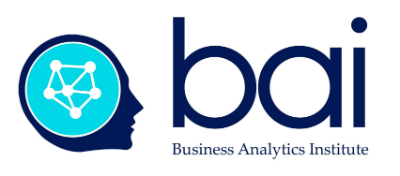
The UPPA closed its international week in Bayonne last Friday on the theme of Industry 4.0. In front of one hundred thirty participants from two dozen universities on three continents, we had the opportunity to discuss the current realities and future perspectives of digital transformation in business.
Michael Papazoglou of the University of Tilburg began the morning with a insightful analysis of the impact of the Cloud, expert systems, and Big Data on internal and extended production processes. Bertrand Rose of the University of Strasbourg ended the session with an thoughtful examination of how IoT technologies have become synonymous with the very definition of smart buildings. In between the two I was left with the challenge of trying to explain why, at the dawn of the Fourth Industrial Revolution, the quality of managerial decision making remains the key to success in business.
No one will dispute that advances in information technology have put an unprecedented breadth and depth of data at the disposal of both strategic and operational management. This said, the value of the data comes from the very human ability to contextualize this input in the industry and in the organizations in which they work. The suggestion that the algorithms behind Industry 4.0 technologies will allow factories and offices to perform optimally with only marginal human intervention is as dangerous as it illusory. Regardless of the hype, algorithms are nothing more than computational procedures that “facilitate” decision making by reducing the entropy we see in the data. Much like the mental shortcuts we use in deduction and induction, or the business processes used in organizations to optimize the flows of goods and services, algorithms are simply someone’s attempt to capitalize on what machines are capable of processing.
The algorithms behind Industry 4.0 are for the most part attempts to minimize perceptions of risk and uncertainty in stochastic decision environments based on probability theory. Machine learning itself is largely about plotting data to probability distributions to produce generalizable algorithms. Beyond the math, probability remains nothing more than an educated guess based on both how we define the problem and the number of parameters we wish to consider. As demonstrated by Nassim Nicolas Taleb in the both The White Swan[i] and his monograph on Silent Risk[ii], probability theories have repeatedly led us to some very poor decisions. He argues quite convincingly that the correct use of data science is less about looking for generalizable patterns than it is for exploring the outliers that resist explanation. In short, when facing an exceptional business challenge, manually exploring these exceptions is certainly more valuable than relying on machine reading data sets.
At a different level, we need to keep in mind that what separates statistics from business is that the latter is a human activity based on perceptions of data rather than the data itself. Understanding how people look at the data requires exploring the heuristics and cognitive biases implicit in how we look at, aggregate and process information. Exploring the realities of information work is essential in analyzing how businesses formulate both the problems they seen and how management scopes out what may be acceptable solutions. Making sense of the context comes through telling stories by the numbers rather than simply relating the facts. There is nothing either virtual or automatic about transforming data into action — this is the domain of human decision making.
In closing, a new book by my colleague Fernando Cuevas reminded me of the fundamental difference between human resources and human relations in business today.[iii] If human resource management stems from a mechanistic vision of how businesses strive to optimize formal organizations, human relations are the product of informal networks in which human beings express empathy, tolerance, compassion and value. Industry 4.0 will never be more than just another number if we forget than a manager’s primary job isn’t behind his or her console, but in front of their customers, colleagues, and shareholders. In the era of Industry 4.0, a manager’s end goal isn’t to become an expert in machine learning, but an eternal student of the very human activity of decision-making.
Improving managerial decision-making is heart and soul of the Business Analytics Institute. In our Summer School in Bayonne, as well as in our Master Classes in Europe, our focus on digital economics, data-driven decision making, machine learning, and visual communications we can help you put analytics to work for you and your organization.
Lee Schlenker is a Professor at ESC Pau, and a Principal in the Business Analytics Institute http://baieurope.com. His LinkedIn profile can be viewed at www.linkedin.com/in/leeschlenker. You can follow us on Twitter at https://twitter.com/DSign4Analytics
[i] Taleb, Nassim Nicholas (2010). The Black Swan: the impact of the highly improbable (2nd ed.). London: Penguin
[ii] Cirillo, P. and Taleb, N.N., 2016, “On the statistical properties and tail risk of violent conflicts”
[iii] Cuevas, F., 2017, De la haine à l’amour, les relations humaines dans la vie privée et professionnelle, L'Harmattan

